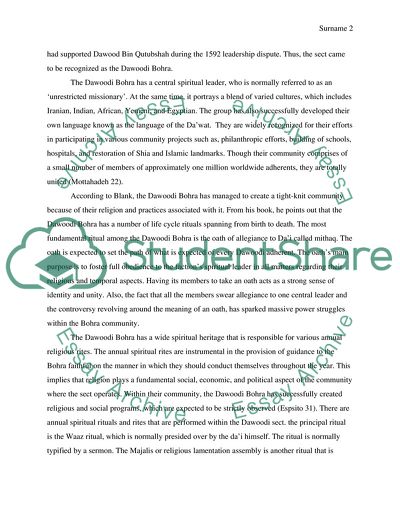Cite this document
(Iranian Shia and Dawoodi Bohra Literature review Example | Topics and Well Written Essays - 2000 words, n.d.)
Iranian Shia and Dawoodi Bohra Literature review Example | Topics and Well Written Essays - 2000 words. https://studentshare.org/anthropology/1789139-iranian-shia-and-daudi-boahra
Iranian Shia and Dawoodi Bohra Literature review Example | Topics and Well Written Essays - 2000 words. https://studentshare.org/anthropology/1789139-iranian-shia-and-daudi-boahra
(Iranian Shia and Dawoodi Bohra Literature Review Example | Topics and Well Written Essays - 2000 Words)
Iranian Shia and Dawoodi Bohra Literature Review Example | Topics and Well Written Essays - 2000 Words. https://studentshare.org/anthropology/1789139-iranian-shia-and-daudi-boahra.
Iranian Shia and Dawoodi Bohra Literature Review Example | Topics and Well Written Essays - 2000 Words. https://studentshare.org/anthropology/1789139-iranian-shia-and-daudi-boahra.
“Iranian Shia and Dawoodi Bohra Literature Review Example | Topics and Well Written Essays - 2000 Words”. https://studentshare.org/anthropology/1789139-iranian-shia-and-daudi-boahra.


